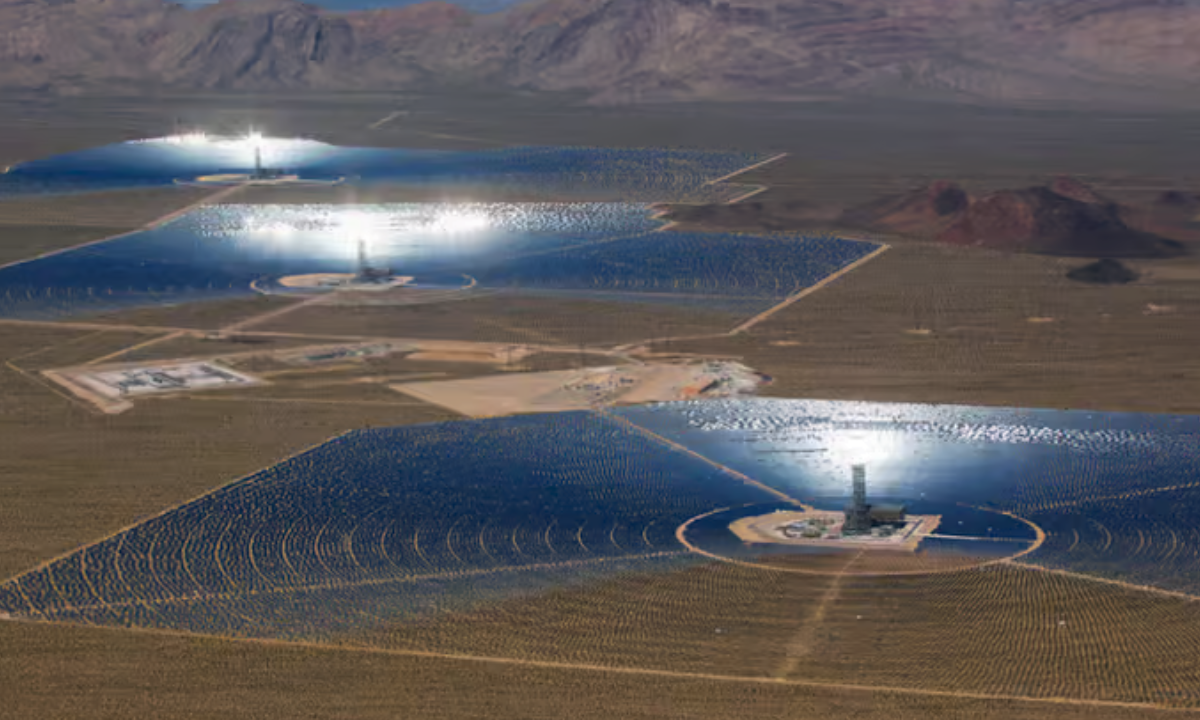Ivanpah, the solar plant that promised to revolutionize and be the future of clean energy in the United States, is closing.

The Ivanpah solar plant, located on the California-Nevada border, will close in 2026, just eleven years after its inauguration.
This was announced by NRG Energy, one of the project's co-owners, which also includes participation from Google and BrightSource Energy.
The decision includes the early termination of contracts with electric companies such as Pacific Gas & Electric and Southern California Edison, and is subject to regulatory approval.
Ivanpah opened in 2014 as the world's largest concentrated solar power facility, a technology that uses nearly 350,000 computer-controlled mirrors to reflect the sun's rays toward towers over 420 feet tall.
The heat generated converted water into steam to drive electric turbines, offering the possibility of storing thermal energy and producing electricity even without sunlight.

The project received $1.6 billion in federal loan guarantees. Photo: X: @RazzoMaximus.
The project received $1.6 billion in federal loan guarantees from the U.S. Department of Energy and was built at a total cost of $2.2 billion on federal land in the Mojave Desert.
Its construction was endorsed by the administration of then-President Barack Obama as a milestone in the transition to clean energy.
However, the plant's performance fell short of technical expectations. As BloombergNEF solar analyst Jenny Chase explained to CNN, operating this type of technology proved more complex than expected: it requires perfect and constant alignment of thousands of mirrors , as well as intensive maintenance similar to that of fossil fuel plants.
Furthermore, the rapid decline in the costs of solar photovoltaics and batteries has led to simpler and cheaper alternatives entering the market.
An NRG spokesperson told CNN that while prices were competitive in 2009 when the contracts were signed, subsequent technological advances in other forms of solar energy led to more efficient and cost-effective options dominating the sector.
This is Ivanpah, a solar power facility in the Mojave Desert. Fifteen years ago they got a $1.6 billion loan from the Department of @ENERGY . Now 11 years later the facility is closing. So Reason's @BessByers wants to know, is this the worst solar project ever? pic.twitter.com/CUx6f2DT5O
— reason (@reason) April 21, 2025
From the outset, Ivanpah was also criticized for its environmental impact. Organizations like the Sierra Club warned about the destruction of habitats for endangered species , such as the desert tortoise, and denounced the deaths of birds that were incinerated in mid-air by concentrated beams of light, a phenomenon known as streamers.
Sierra Club member Julia Dowell told CNN that the plant was "a financial waste and an environmental disaster." Despite the fact that the project's developers implemented mitigation measures, many environmentalists maintain that it should not have been approved.
Experts like Kenneth Gillingham, a professor of environmental economics at Yale, argue that public investment is key to fostering innovation in developing sectors, even when some projects are overtaken by new technologies.
"Identifying which technology will be most effective is extremely difficult," Gillingham told CNN. "The important thing is that innovation continues."
Although the plant will be decommissioned, the site could be repurposed for another type of solar installation, more in line with current technologies. According to NRG, the decommissioning will be phased in starting in 2026.
*This content was written with the assistance of artificial intelligence, based on publicly available information released to media outlets. It was also reviewed by a journalist and an editor.
More newseltiempo





